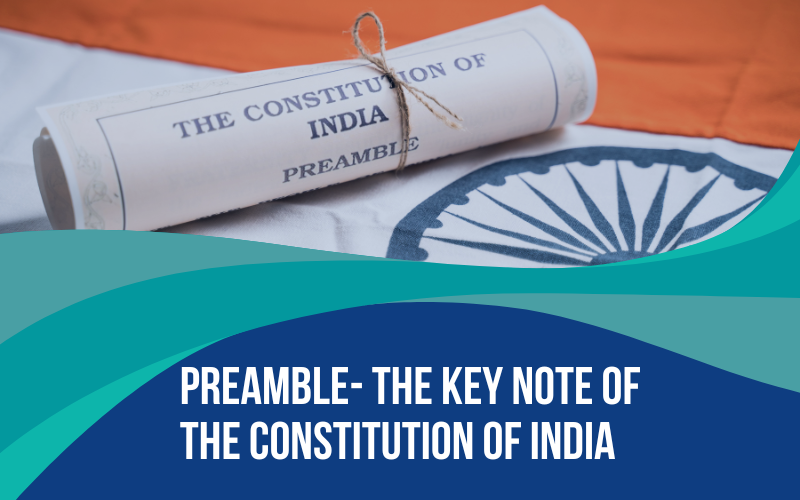
1. Which of the following terms were added to the Preamble of the Indian Constitution by the 42nd Constitutional Amendment Act, 1976?
a) Socialist and Secular
b) Democratic and Republic
c) Sovereign and Democratic
d) Republic and Sovereign
Answer: a) Socialist and Secular
2. The Preamble of the Indian Constitution declares India as a:
a) Union of States
b) Socialist, Democratic Republic
c) Federal Republic
d) Sovereign, Socialist, Secular, Democratic Republic
Answer: d) Sovereign, Socialist, Secular, Democratic Republic
3. Which of the following objectives is not explicitly mentioned in the Preamble of the Indian Constitution?
a) Liberty
b) Equality
c) Fraternity
d) Justice (Social, Economic, Political)
Answer: d) Justice (Social, Economic, Political)
4. In which landmark case did the Supreme Court of India declare that the Preamble is an integral part of the Constitution?
a) Golaknath Case
b) Minerva Mills Case
c) Kesavananda Bharati Case
d) Maneka Gandhi Case
Answer: c) Kesavananda Bharati Case
5. The idea of the Preamble to the Indian Constitution has been borrowed from which country?
a) United Kingdom
b) United States of America
c) Ireland
d) Canada
Answer: b) United States of America
Class Sessions
1- 1.Constitutional Development till 1857 AD
2- Previous Question
3- 2 Constitutional Development from 1858 AD
4- Previous Questions
5- 3 Difference between a Federation and a Confederation
6- Previous Questions
7- 4 Salient Features of the Constitution
8- Previous Questions
9- 5 Independent Bodies
10- Previous Questions
11- 6 Article and Part of Indian Constitution
12- Previous Questions
13- 7 Preamble of the Constitution
14- Previous Questions
15- 8 Nature of Indian Constitution
16- Previous Questions
17- 9 Union of States
18- 10 Evolution of States and Union Territories
19- Previous Questions
20- 2.1 Fundamental Rights
21- Previous Questions
22- Writs Types and Scope
23- Previous Questions
24- Human Rights
25- DIRECTIVE PRINCIPLE OF STATE POLICY
26- Previous Questions
27- 3.1 FUNDAMENTAL DUTIES
28- Previous Questions
29- 4.1 THE UNION
30- Veto Power
31- Previous Questions
32- 4.4 The Presidents of India
33- Previous Questions
34- Bills that require Prior recommendation of the President
35- Comparison between the President and the Vice - President
36- Previous Questions
37- Council of Ministers
38- Previous Questions
39- UNION LEGISLATION - PARLIAMENT
40- COMPARISON BETWEEN THE POWERS AND POSITION OF THE RAJYA SABHA AND THE LOK SABHA
41- Previous Questions
42- THE GOVERNOR
43- Previous Questions
44- CHIEF MINISTER
45- Previous Questions
46- THE STATE LEGISLATURE
47- Previous Questions
48- JAMMU AND KASHMIR - OLD PROVISION
49- SUPREME COURT
50- Previous Questions
51- 1.THE FEDERAL SYSTEM
52- Previous Questions
53- 1.2 Finance Commission - Article 280
54- Previous Questions
55- 2 AUTONOMOUS OFFICES UNDER THE CONSTITUTION
56- Previous Questions
57- 3. A NOTE ON PANCHAYATI RAJ
58- Previous Questions
59- 4 'MOTIONS' IN PARLIAMENT
60- 5 LAW COMMISSION REPORT
61- 6 ANTI DEFECTION LAW
62- Previous Questions
63- 7 NITI AAYOG & PLANNING COMMISSION
64- 8 LOKPAL AND LOKAYUKTA
65- 9 PUBLIC INTEREST LITIGATION
66- 10 RIGHT TO INFORMATION
67- 11 ADMINISTRATIVE REFORMS
68- 12 HINDU SUCCESSION ACT
69- 13 NEW PATENT LAW
70- 14 FIRST IMPEACHMENT AGAINST A JUDGE
71- 15 PRESIDENT'S NOD TO DOMESTIC VIOLENCE ACT
72- 16 ALL WOMEN HAVE RIGHT TO SAFE, LEGAL ABORTION: INDIA’S TOP COURT
73- 17 JUDGEMENTS IN 2020
74- 18 IMPORTANT AMENDMENTS TO THE INDIAN CONSTITUTION
75- Previous Questions
